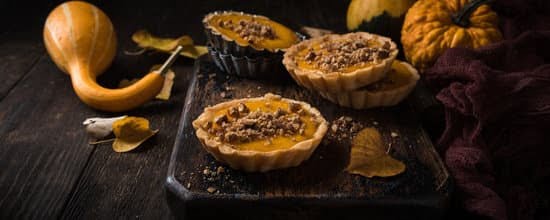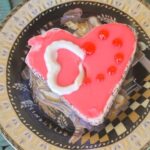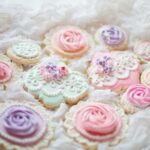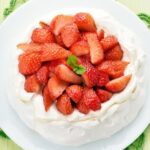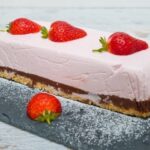The art of cake decoration has always fascinated people with its beautiful and intricate designs. One of the most popular techniques used in cake decorating is the combination of buttercream and fondant. Buttercream provides a smooth and creamy base, while fondant offers a sleek and polished finish to any cake. Learning how to decorate a cake with buttercream and fondant opens up endless possibilities for creating stunning works of edible art.
Buttercream and fondant are powerful tools in cake decoration. Buttercream allows for versatility in texture, taste, and design, as it can be easily piped or spread onto cakes. Fondant, on the other hand, provides a flawless and uniform appearance with its smooth finish, making it ideal for creating intricate details and sculpting unique shapes.
Mastering the art of decorating with buttercream and fondant is essential for anyone who wants to take their cake baking skills to the next level. Not only does it allow for greater creativity, but it also adds a professional touch to homemade cakes. In this article, we will guide you through the process of decorating a cake using these techniques, starting from gathering the necessary tools and ingredients to achieving flawless finishes and adding finishing touches.
So whether you’re a baking enthusiast looking to explore new decorative techniques or an aspiring cake decorator hoping to turn your passion into a profession, learning how to decorate a cake with buttercream and fondant is an essential skill that will elevate your creations to new heights of delicious beauty.
Essential Tools and Ingredients
When it comes to decorating a cake with buttercream and fondant, having the right tools and ingredients is essential. Here is a comprehensive list of what you will need to achieve professional-looking results.
For buttercream decoration, some essential tools include offset spatulas in various sizes, a bench scraper for smoothing the sides of the cake, piping bags and tips for creating decorative designs, and a turntable for easy maneuvering while decorating. It is also important to have a good quality mixer or stand mixer for making the buttercream itself.
When it comes to fondant decoration, you will need rolling pins, both small and large, for rolling out fondant in different sizes. Fondant smoothers are useful for achieving that perfectly flat finish on the cake. A sharp knife or pizza cutter will come in handy when trimming excess fondant from the bottom of the cake. Additionally, having molds and cutters can help you create intricate fondant shapes and designs.
There are different types of buttercream that can be used for decoration, including American buttercream (made with powdered sugar), Swiss meringue buttercream (made with egg whites), and Italian meringue buttercream (made by adding sugar syrup to whisked egg whites). Each type has its own unique taste and texture that can complement different flavors of cakes.
Similarly, there are different types of fondant available such as rolled fondant (most commonly used), poured fondant (used for creating smooth finishes on petits fours), and modeling chocolate (which combines well with fondant for sculpting decorations). It’s important to choose the right type of fondant based on your specific needs.
Beginners can find these tools and ingredients at specialty baking supply stores, online retailers, or even local craft stores that have a baking section. It may be helpful to invest in a beginner’s kit that includes some basic tools and a variety of fondant colors to get started.
By having the essential tools and ingredients for buttercream and fondant decoration, you will be well-prepared to create stunning cakes that not only look amazing but taste delicious too.
Preparing the Cake
Before diving into the world of cake decoration with buttercream and fondant, it is essential to properly prepare the cake for decorating. This step sets the foundation for a beautifully decorated masterpiece. Here are some key tips on how to prepare your cake:
Firstly, it is crucial to level and stack your cake layers properly. Using a serrated knife or a cake leveler, carefully slice off any domed tops to create even layers. If you are working with multiple layers, make sure they are centered on top of each other to create a stable and balanced structure.
Next, achieving a smooth canvas for decorating is vital. Crumb coat your cake by applying a thin layer of buttercream all over the surface. This helps seal in any loose crumbs and provides a smooth base layer for the final decorations.
Chilling the cake before decoration is also important. Place your crumb-coated cake in the refrigerator for at least 30 minutes to allow the buttercream to firm up. This will make it easier to handle when applying additional layers of buttercream or fondant.
By following these steps, you will ensure that your cake is prepared correctly and ready for decorating. Taking the time upfront will result in an easier and more seamless decorating process.
Remember, practice makes perfect. Keep honing your skills in preparing cakes until you feel confident with each step before moving on to more elaborate decorations with buttercream and fondant.
Mastering Buttercream Basics
In the world of cake decorating, mastering the art of buttercream is a fundamental skill that every aspiring cake decorator should have in their repertoire. Buttercream is a versatile and delicious frosting that can be used for a variety of cake designs. In this section, we will guide you through the process of mastering buttercream basics.
To achieve the perfect buttercream, it is important to start with a good recipe. Making buttercream from scratch allows you to control the flavor and consistency. A simple buttercream recipe typically includes butter, powdered sugar, vanilla extract, and milk or heavy cream. The key to achieving the perfect consistency lies in properly softening the butter and gradually adding powdered sugar until a smooth texture is achieved.
When making buttercream, there are various techniques that can be employed to achieve different consistencies. For spreading or crumb coating the cake layers, a medium-consistency buttercream is generally used. This allows for easy application and helps create a smooth surface for decorating.
On the other hand, if you wish to pipe intricate designs or flowers, stiff-consistency buttercream should be used. Achieving the desired consistency may require adding more powdered sugar for stiffer results or incorporating small amounts of milk or cream for thinner consistency.
In addition to flavoring the basic vanilla buttercream with extracts like almond or lemon, coloring your buttercream can add an extra touch of creativity to your cakes. Gel food coloring is recommended as it does not alter the consistency of your frosting compared to liquid coloring. By using various techniques such as color blending or piping different colors together, you can create beautifully vibrant designs on your cakes using buttercream.
Mastering these basic techniques will set you on your way to becoming a skilled cake decorator with buttercream. From creating simple textured finishes to piping intricate designs, experimenting with different tools and colors will help you develop your own unique style and artistic flair in cake decoration. So grab your piping bags and get ready to elevate your cake decorating skills with buttercream.
Applying Buttercream
When it comes to decorating cakes with buttercream, there are a few different methods you can use. Here are some popular techniques to achieve a smooth and even finish:
- Spatula Smoothing: Using an offset spatula, spread a thin layer of buttercream over the cake, starting from the top and working your way down the sides. Then, go back and smooth out any imperfections by gently running the spatula over the surface of the cake in a circular motion. This technique is great for achieving a clean and polished look.
- Piping: Another way to apply buttercream is by using a piping bag fitted with various tips. This allows you to create decorative designs such as borders, rosettes, or even intricate patterns. Fill the piping bag with your desired buttercream color and practice applying even pressure as you pipe onto the cake.
- Textured Designs: If you want to add some texture to your cake design, try using different tools or techniques to create interesting patterns or effects on the buttercream surface. You can use a fork for a simple textured look or experiment with combs, brushes, or stencils for more intricate designs.
No matter which method you choose, it’s important to remember a few things when applying buttercream:
- Start with a crumb coat: Before applying your final layer of buttercream, apply a thin layer called a crumb coat. This helps seal in any loose crumbs and provides a smooth foundation for the final layer.
- Chill between layers: After each layer of buttercream is applied, place your cake in the refrigerator for about 15 minutes to allow it to firm up before adding another layer. This will help prevent any smudging or smearing of the buttercream.
- Practice makes perfect: Don’t be discouraged if your first attempts at applying buttercream aren’t perfect. It takes practice to develop a steady hand and achieve the desired results. Keep experimenting and trying different techniques until you find what works best for you.
By mastering the art of applying buttercream, you can create beautifully decorated cakes that are not only visually appealing but also delicious to eat. So don’t be afraid to get creative and have fun with your designs.
Introduction to Fondant
Fondant is a popular type of icing that has gained immense popularity in the world of cake decoration. It is smooth, pliable, and can be rolled out to cover cakes with a flawless finish. Fondant allows decorators to create intricate designs and shapes that are not easily achievable with buttercream alone. In this section, we will explore what fondant is, its various types, and how it has become an essential technique in cake decoration.
What is Fondant?
Fondant is a type of icing that resembles dough or clay in texture and consistency. It is made from sugar, water, gelatin or corn syrup, and glycerin. The resulting paste can be rolled out into thin sheets or molded into different shapes for cake decoration. Fondant provides a smooth and elegant finish to cakes, making it perfect for special occasions such as weddings or birthdays.
Types of Fondant
There are two main types of fondant: rolled fondant and poured fondant.
Rolled fondant is the most commonly used type and can be purchased pre-made or made from scratch using ingredients like powdered sugar, water, food-grade glycerin, and gelatin. This type of fondant is pliable and easy to work with.
Poured fondant has a thinner consistency compared to rolled fondant. It is typically made by heating together sugar, water, and flavorings until the mixture becomes liquid. Poured fondant is often used for coating petits fours or creating fillings for chocolates.
The Importance of Fondant in Cake Decoration
Fondant plays a crucial role in cake decoration because it offers decorators endless opportunities for creativity and intricate design work. Unlike buttercream frosting, which tends to melt in warmer temperatures or under direct sunlight, fondant creates a protective layer around the cake that helps it retain its shape and structure.
Additionally, fondant can be tinted in various colors using gel or powder food coloring, making it perfect for creating custom-colored cakes. Its smooth finish provides cake decorators with a blank canvas to showcase their artistic skills through the addition of fondant accents, flowers, or figures.
Overall, fondant is an essential technique every cake decorator should learn to incorporate into their repertoire. It opens up a whole new world of possibilities and allows for professional-looking designs that will impress any cake lover.
Covering the Cake with Fondant
Fondant is a versatile and popular medium for cake decoration. It provides a smooth, flawless finish that can give your cake a professional look. Covering a cake with fondant may seem intimidating, but with the right techniques and practice, you can achieve stunning results. In this section, we will take you through a step-by-step tutorial on how to roll out fondant and cover your cake like a pro.
Step 1: Prepare Your Cake
Before covering the cake with fondant, it is essential to ensure that your cake is properly prepared. Make sure your cake layers are level by using a serrated knife or a cake leveler. Stack the layers with a thin layer of buttercream in between to hold them together. Crumb coat the entire cake with buttercream to provide a smooth base for the fondant.
Step 2: Knead and Roll Out the Fondant
Start by kneading your fondant to make it pliable. Dust your work surface and rolling pin with powdered sugar or cornstarch to prevent sticking. Roll out the fondant into a large, even circle that is about 1/8 inch thick. To determine how much fondant you will need, measure the diameter of your cake plus twice its height.
Step 3: Drape and Smooth the Fondant
Carefully lift the rolled-out fondant using your rolling pin and drape it over your prepared cake. Begin smoothing the top of the cake gently with your hands, working from the center outward. Then use a smoother or paddle tool to press against the sides of the cake while continuing to smooth and stretch any pleats or wrinkles until they disappear.
Step 4: Trim and Finish
Trim off any excess fondant using a sharp knife or fondant trimmer. Be careful not to cut too close to the cake, leaving just enough fondant to tuck under the bottom edge for a clean finish. Smooth out any imperfections using a smoothing tool and gently press the fondant against the base of the cake.
By following these steps, you can achieve a perfectly covered cake with smooth fondant. Remember that practice makes perfect, so don’t be discouraged if your first attempts are not flawless. With time and patience, you will gain confidence in covering cakes with fondant and create impressive designs for special occasions.
Combining Buttercream and Fondant
When it comes to cake decoration, combining buttercream and fondant can take your creations to the next level. By incorporating both techniques, you can achieve intricate designs and add depth and texture to your cakes. In this section, we will explore the various techniques for creating buttercream and fondant accents, incorporating fondant decorations onto a buttercream base, and using both techniques together to create stunning designs.
One technique for combining buttercream and fondant is creating buttercream accents on a fondant-covered cake. This involves using buttercream icing to pipe decorative borders or intricate designs directly onto the smooth surface of rolled-out fondant. The contrast between the creamy buttercream and the smooth fondant creates an eye-catching effect that adds dimension to your cake.
Another way to combine these two decoration methods is by using fondant decorations on top of a buttercream base. You can create beautiful flowers, figures, or other shapes out of colored fondant and place them strategically on your cake after covering it with a layer of buttercream. The versatility of fondant allows you to mold it into any shape or design you desire, bringing your cake to life with personalized embellishments.
To ensure that your combined buttercream and fondant decorations last longer, it is important to follow some tips. When applying fondant decorations onto a buttercream base, gently press them into the icing but avoid pushing too hard as this may cause cracks in the smooth surface. Additionally, make sure all elements are securely attached by dabbing a small amount of water or edible glue on the back of each piece before placing it onto the cake.
By combining buttercream and fondant in your cake decoration projects, you have endless possibilities for creativity. Whether you prefer elegant designs or playful themes, these techniques allow you to achieve stunning results that will impress guests at any occasion.
| Techniques for combining buttercream and fondant: |
|---|
| Creating buttercream accents on a fondant-covered cake |
| Using fondant decorations on top of a buttercream base |
| Tips for ensuring the longevity of the combined decorations |
Finishing Touches
In the final section of this article, we will explore the important step of adding finishing touches to your cake decorations. These final details can truly elevate the overall look of your cake and make it stand out.
One common technique for enhancing your cake is by adding piped buttercream borders. This is a simple yet effective way to give your cake a polished and professional finish. Using a piping bag fitted with a small round tip, you can create different border designs such as scallops, dots, or shells. It is important to practice your piping skills beforehand on parchment paper or a spare piece of cake to ensure clean and consistent lines.
Another way to add a touch of elegance to your cake is by incorporating fondant embellishments and figures. Fondant allows you to create intricate designs that are not easily achievable with buttercream alone. You can mold fondant into various shapes and figures like flowers, bows, or even characters. These embellishments can be placed strategically on the cake or used as individual cake toppers for a more impactful presentation.
To ensure that your beautifully decorated cake lasts longer, it’s essential to follow some tips for increasing the longevity of the decorations. Firstly, store your finished cake in a cool, dry place away from direct sunlight or humidity.
This will help preserve the colors and textures of both buttercream and fondant decorations. Additionally, if you’re planning on transporting the cake, take extra precautions by using support dowels between stacked tiers and securing any fragile decorations with edible glue or royal icing.
With these finishing touches, your buttercream and fondant-decorated cake will be ready to impress any crowd. Don’t be afraid to experiment with different techniques and designs – after all, decorating cakes is as much an art form as it is a culinary skill. Enjoy the process and embrace the joy of creating beautiful, delicious cakes that will leave a lasting impression on those lucky enough to enjoy them.
| Piped Buttercream Borders | Fondant Embellishments and Figures | Tips for Longevity of Decorations |
|---|---|---|
| Use a piping bag with a small round tip for clean and consistent lines. | Create intricate designs such as flowers, bows, or characters. | Store the cake in a cool, dry place away from direct sunlight or humidity. |
| Practice piping skills on parchment paper or spare cake before applying to the cake. | Place the embellishments strategically on the cake or use them as individual toppers. | Secure fragile decorations with edible glue or royal icing during transportation. |
Conclusion
In conclusion, learning how to decorate a cake with buttercream and fondant opens up a world of creativity and possibilities. Both techniques have their own unique advantages, allowing for a wide range of designs and decorations. By mastering these skills, you can create stunning cakes that are not only visually appealing but also delicious.
One of the greatest benefits of using buttercream and fondant in cake decoration is their versatility. Buttercream allows for smooth and textured finishes, while fondant provides a flawless canvas for intricate designs. By combining these two techniques, you can achieve truly impressive creations that will amaze your friends and family.
It is important to remember that decorating cakes with buttercream and fondant takes practice. Don’t be discouraged if your first attempts don’t turn out exactly as planned. Take the time to experiment with different techniques and styles, and don’t be afraid to make mistakes. The joy of creating beautiful, delicious cakes lies in the process of learning and improving.
So, whether you’re a beginner just starting out or an experienced baker looking to expand your skills, don’t hesitate to dive into the world of buttercream and fondant cake decoration. With the right tools, ingredients, and techniques at hand, you’ll soon be able to create stunning masterpieces that will leave everyone in awe. So go ahead-let your creativity soar and enjoy the pleasure of making something both beautiful and delicious.
Frequently Asked Questions
Can you use buttercream and fondant on the same cake?
Yes, it is possible to use both buttercream and fondant on the same cake. Many cake decorators often use a layer of buttercream as the base layer of icing to add moisture and flavor to the cake.
Once the buttercream is applied, a layer of fondant can be rolled out and carefully draped over the buttercream-covered cake. The buttercream acts as a smooth surface that helps adhere the fondant to the cake.
Can you put fondant straight onto buttercream?
While it is technically possible to put fondant straight onto buttercream, it is not generally recommended. The reason being that buttercream has a softer texture compared to fondant.
Applying fondant directly onto buttercream can cause the softness of the buttercream to create dents and bulges in the fondant surface, resulting in an uneven finish. To achieve a smoother and more professional look, it is advisable to apply a thin layer of ganache or royal icing over the buttercream before adding fondant.
Do you put buttercream on cake before fondant?
Yes, typically, it is common practice to apply a layer of buttercream on the cake before adding fondant. Buttercream serves as an important step in preparing the cake for fondant application because it creates a smooth and even surface for the fondant to adhere to.
The buttercream acts as a “glue” that helps hold the fondant in place and prevents air bubbles from forming between the cake and the fondant layer, ensuring a smoother finish. Additionally, by applying buttercream first, any imperfections or unevenness on the cake’s surface can be corrected or smoothed out before adding the final layer of fondant.

Welcome to our cake decorating blog! My name is Destiny Flores, and I am the proud owner of a cake decorating business named Cake Karma. Our mission is to provide delicious, beautiful cakes for all occasions. We specialize in creating custom cakes that are tailored specifically to each customer’s individual needs and tastes.

